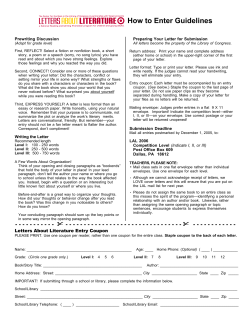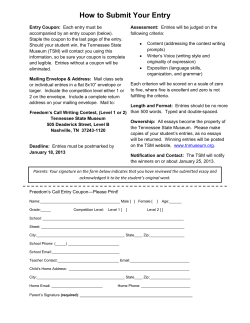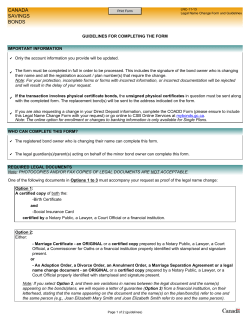
Why do Lenders [Banks] charge Interest on Loans? Compensation for inflation
Chapter 3: Interest Rates and Rates of Return 1. 2. 3. Why do Lenders [Banks] charge Interest on Loans? Compensation for inflation Compensation for default risk – the chance that the borrower will not pay back the loan Compensation for the opportunity cost of waiting to spend your money Compounding and Discounting 1. Future Value – the value at some future time of an investment made today FV = Future Value PV = Present Value P = Principal I = Interest Rate - Future Value = P x [1 + i] = $1000 x [1 + 0.050] = $1050 - Compound Interest = P x [1 + i]n = $1000 x [1 + 0.05]2 = $1,102.50 2. Present Value – the value today of funds that will be received in the future. - Discounting: PV = FV / [1 x i]n $1000 = $1050 / [1 x 0.05]1 Discount Present value is sometimes called “present discounted value” The further in the future a payment is to be received, the small its present value The higher the interest rate we use to discount future payments, the smaller the present value of the payments. 4. The present value of a series of future payments is simply the sum of the discounted value of each individual payment. 1. 2. 3. Time Value of Money – Why are funds in the future worth less than funds in the present? For the same three reasons that lenders charge interest on loans: 1. Dollars in the future will usually buy less than dollars can today 2. Dollars that are promised to be paid in the future may not actually be received. 3. There is an opportunity cost in waiting to receive a payment because you cannot get the benefits of the goods and services you could have bought if you had the money today Debt Instruments 1. Simple Loans 2. Discount Loans 3. Coupon Bonds 1) Face value or par – the amount to be repaid by the bond issuer [the borrower] at maturity. The face value of the typical coupon bond is $1,000. 2) Coupon – The annual fixed dollar amount of interest paid by the issuer of the bond to the buyer. 3) Coupon Rate – The value of the coupon expressed as a percentage of the par value of the bond. For example, if a bond has an annual coupon of $5 and a face value of $1,000, it’s coupon rate is $50/$1,000 =0.05 or 5% 4) Current Yield – the value of coupon expressed as a percentage of the current price of the bond. For example, if a bond has a coupon of $%50, a par value of $1,000, and a current price of $900, its current yield is $50/$900 = 0.056, or 5.6% 5) Maturity – The length of time before the bond expires and the issuer makes the face value payment to the buyer. many government and corporate bonds have maturities of 30 years, which means issuer will make coupon payments each year for 30 years before making one last payment of the face value at the end of thirteenth year 4. Fixed-Payment Loans 1. 2. 3. Student Loans Subsidized Student Loans Unsubsidized Student Loans Private Loans Bonds Prices and Yield to Maturity Bond 1: Three-year, $1000 face value coupon bond with a price of $1050 and a coupon rate of 8% Bond 2: Two-year, $1000 face value coupon bond with a price of $980 and a coupon rate of 6% - Bond 1 appear to be a better investment because it has a higher coupon rate than Bond 2 Bond 1’s higher price means that it has a significantly lower interest rate than Bond 2. If you wanted to earn the highest interest rate on your investment, you choose Bond 2. Yield to Maturity on Other Debt Instruments 1. Simple Loans - Value today = Present value of future payments $10,000 = $10,000 + $1,000 / (1 + i) I = ($11,000 - $10,000) / $10,000 = 10% 2. Discount Bonds - Present value of future payment = Value today $9,200 = $10,000 / (1 + i) I = ($10,000 - $9,200) / $9,200 = 8.7% 3. Fixed-Payment Loans 4. Perpetuities – P = C/i - Perpetuity with a coupon of $25 and price of $500 has a yield to maturity of: I = $25 / $500 = 5% Inverse Relationship Between Bond Prices and Bond Yields 1. 2. - If interest rates on newly issued bonds fall, the prices of existing bonds will rise. If interest rates on newly issued bonds rise, the price of existing bonds will fall. Capital Gain – an increase in the market price of an asset Capital Loss – an decrease in the market price of an asset Chapter 3: Interest Rates and Rates of Return Interest Rate Risk 1. Nominal Interest Rate 2. Real Interest Rate
© Copyright 2025





















